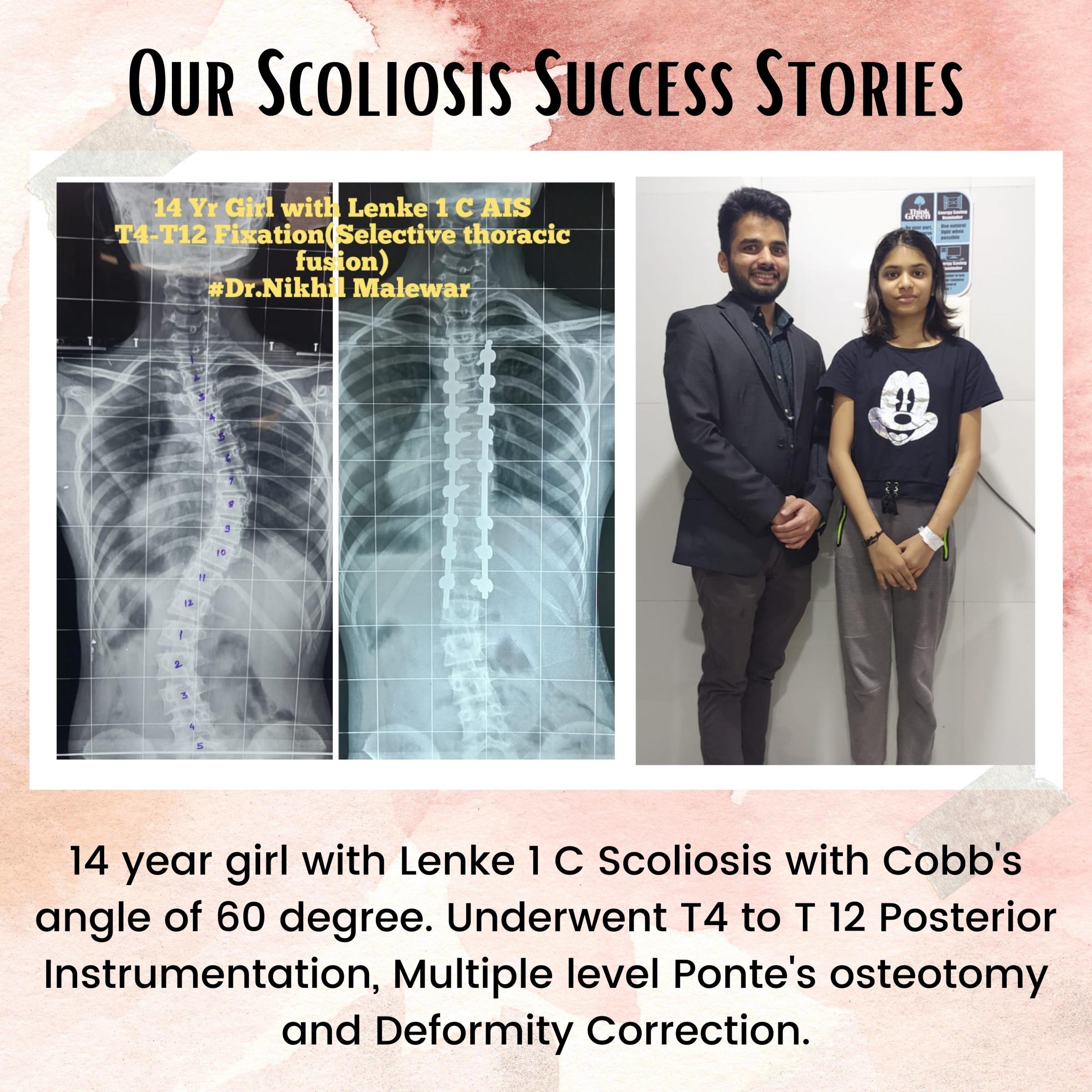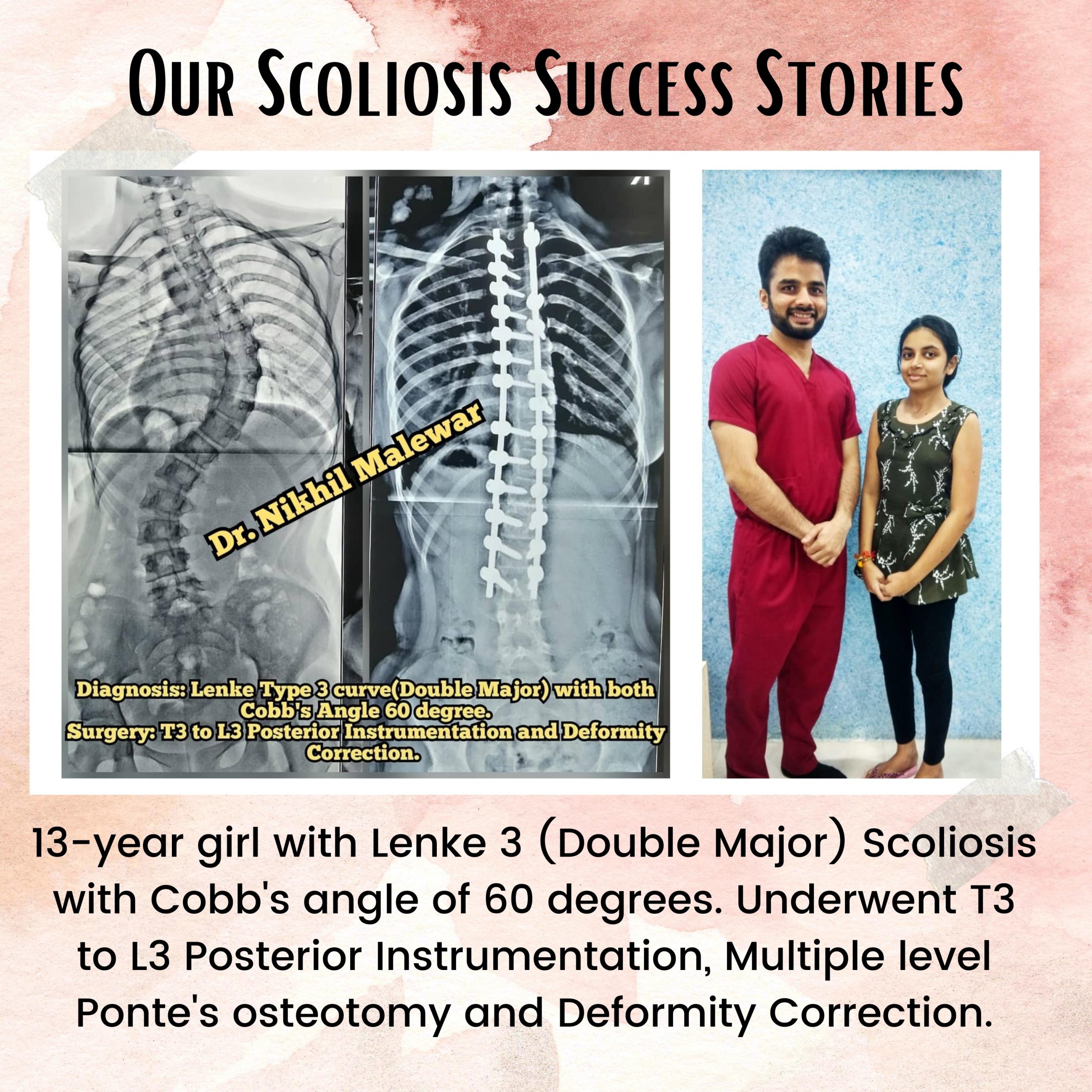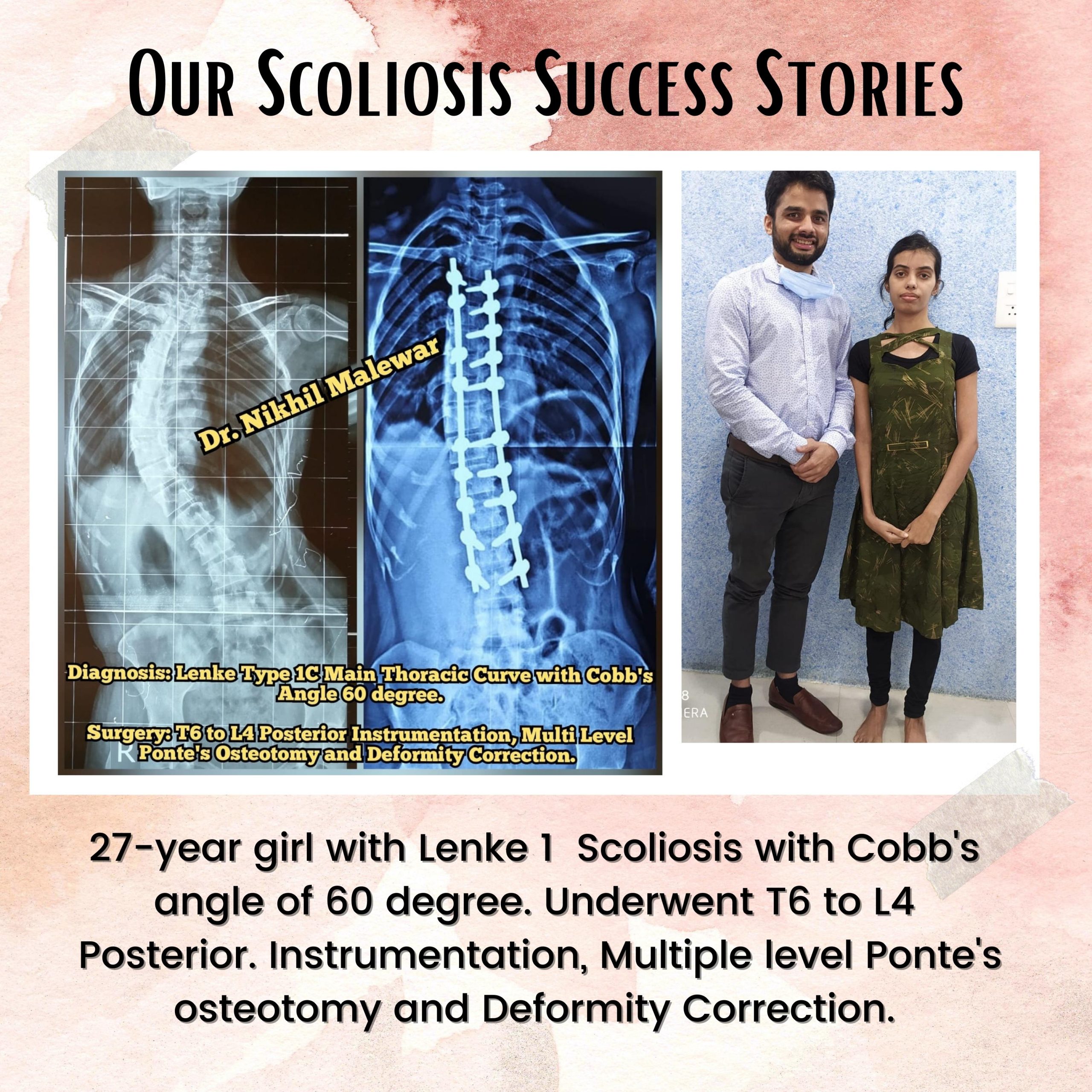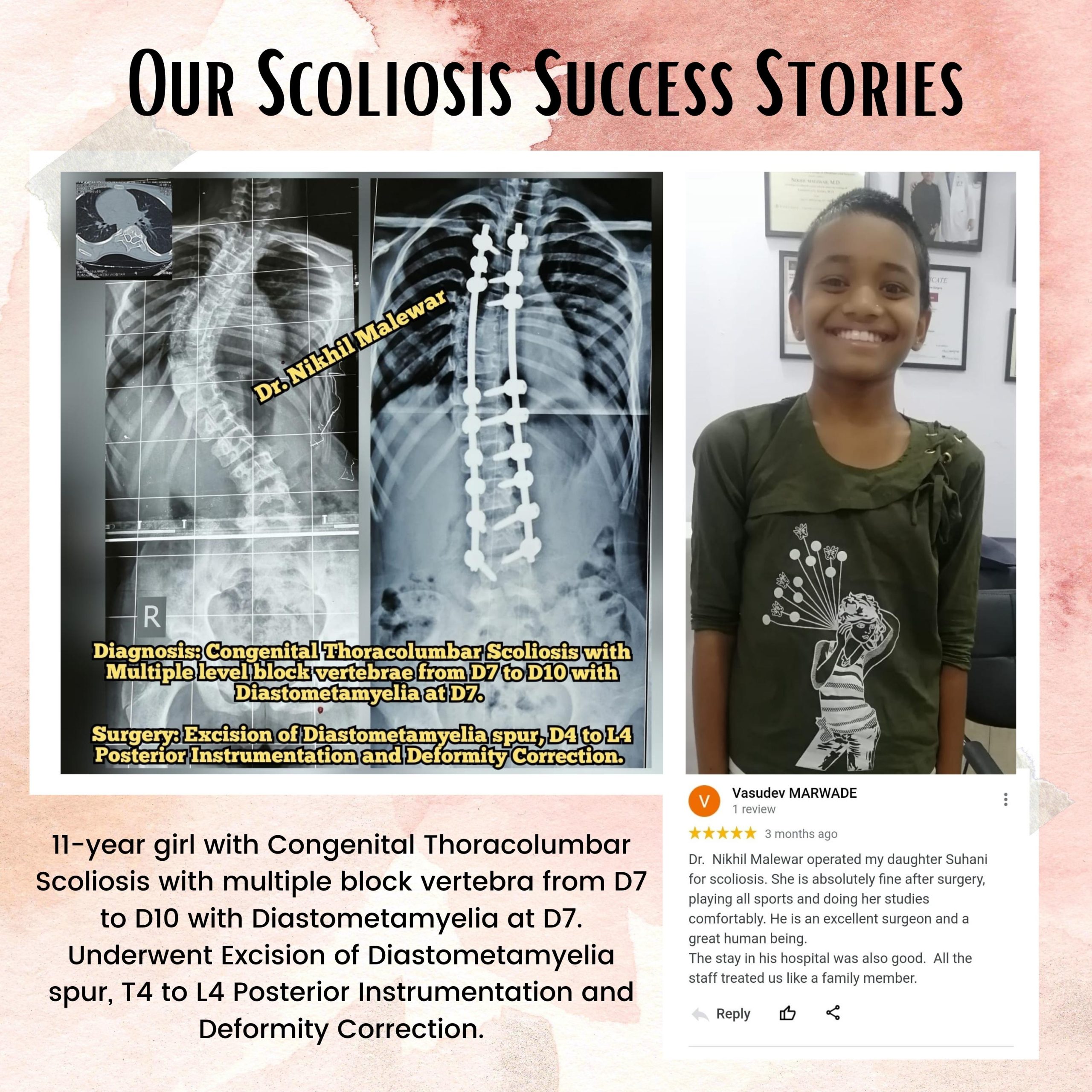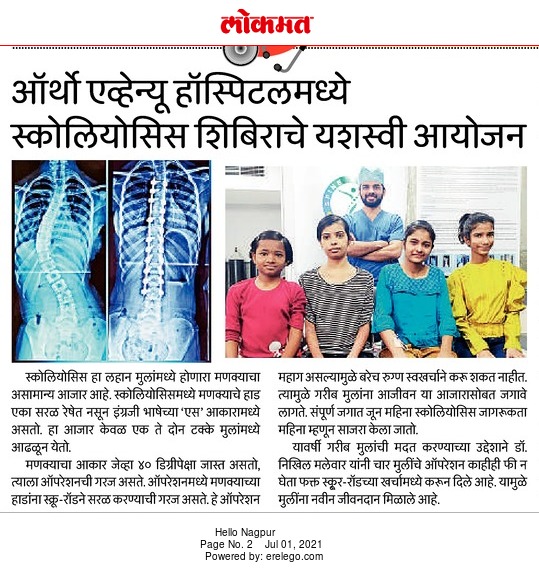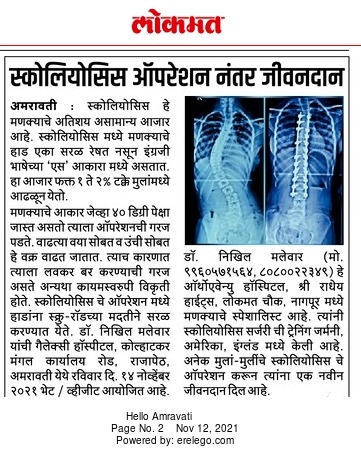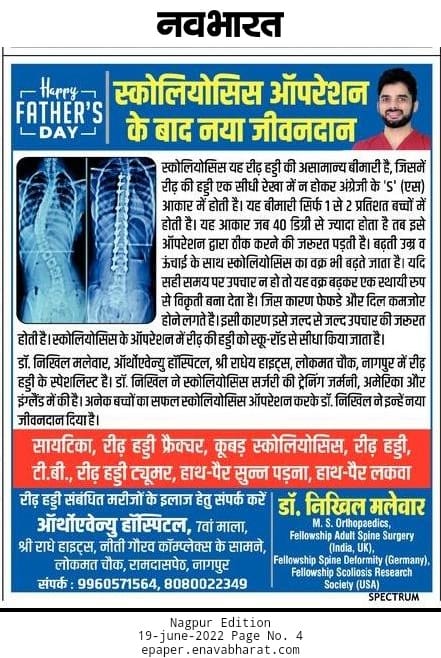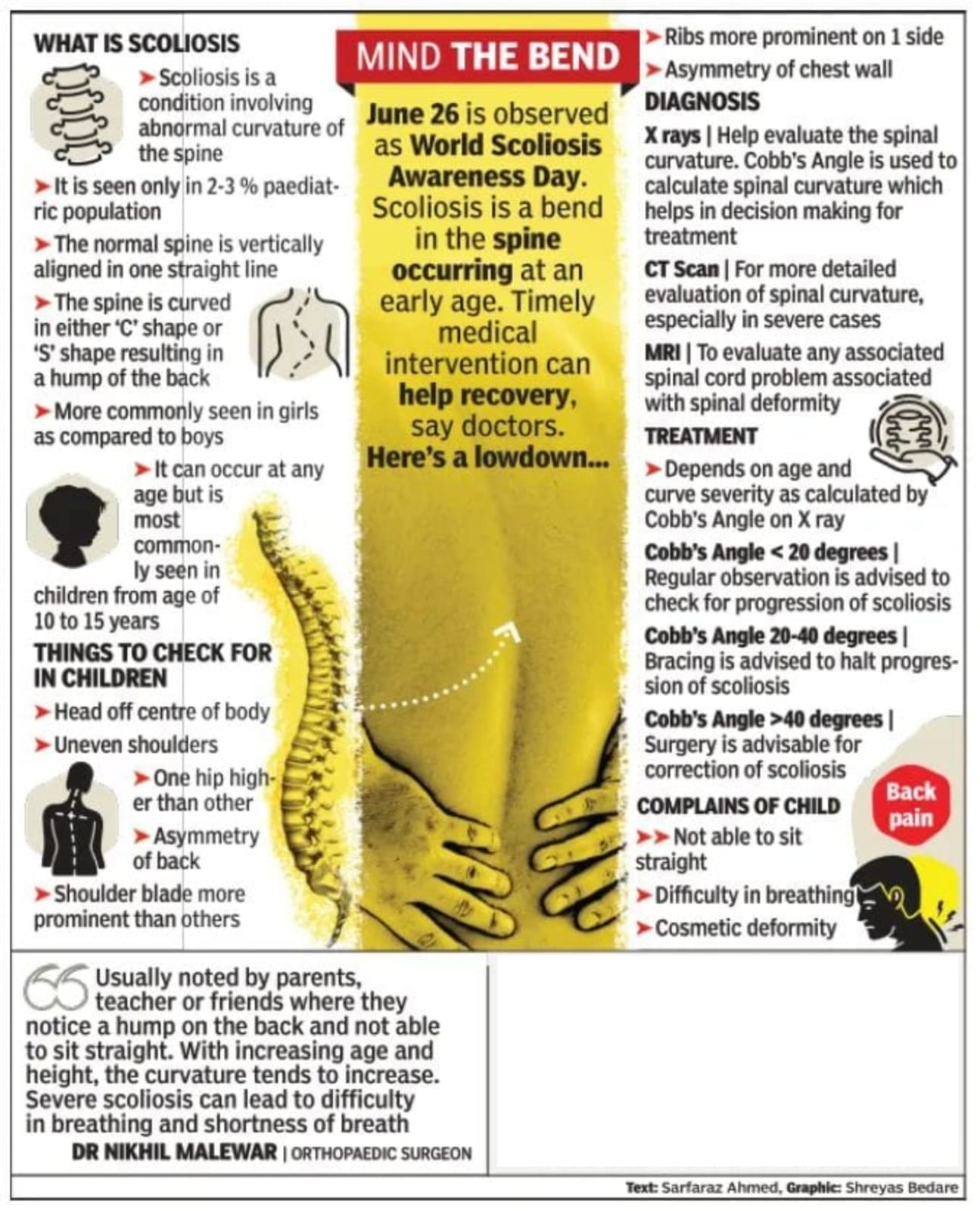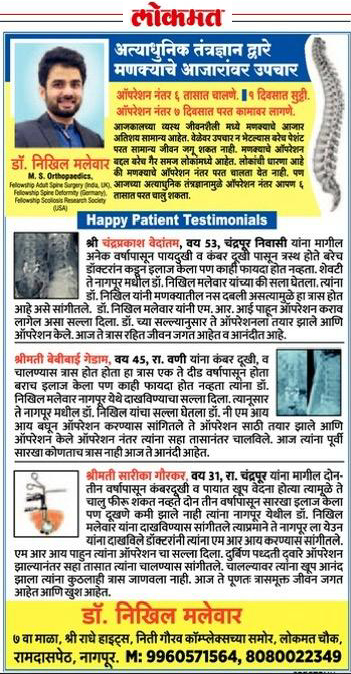Scoliosis Treatment In India
About Scoliosis
Scoliosis is the abnormal twisting and curvature of the spine. It is usually first noticed by a change in the appearance of the back. there are many complications that occur like The Head being slightly off-center, Uneven shoulders, Asymmetry of the chest, One hip higher than the other, Shoulder blade higher than the other, Prominent ribs, Asymmetry of the back and visible curve.
A progressive curve (30 degrees or more) left untreated can cause lung, heart and neurological complications. 2-3% of the population has scoliosis. In 80% of cases, the cause of scoliosis is unknown. Such cases are called idiopathic scoliosis. 10% of adolescents have some degree of scoliosis. Scoliosis most often occurs between ages of 10-15 years. The ratio of girls to boys for scoliosis is 7:1. All students should be screened every year by parents and teachers for signs of scoliosis. Monitoring is the best way to know the minor curves in growing kids and can be treated clinically and radiologically for progression.
Scoliosis is a condition in which the spine of the patient is extremely curved. Treatment for this condition includes a brace to position the spine as the patient grows older, or in severe cases, surgery to correct the curvature of the spine. While bracing does not correct the curve, it has been shown to stop progression in up to 70% of patients with curves less than 40 degrees. If the progressing curves are more than 40 degrees in a growing spine will be indicated for surgical treatment.

Scoliosis is an abnormal curvature of the spine or in the backbone on one side. Scoliosis is a condition in which a patient’s spine has a sideways curvature and the curve is usually “C” or “S” in shape over three dimensions. There will be a normal spine curve when you look from the side, but the spine should appear straight when you look from the front. Usually, the degree of curvature is stable but increases over time in some cases. Mild scoliosis is not problematic, but as children grow, some spine deformities continue to get more severe. Severe scoliosis can reduce the amount of space in the chest, making it difficult to breathe properly. The degree of curvature in scoliosis ranges from 10-20 degrees considered mild scoliosis, 20-50 degrees as moderate scoliosis and greater than 50 degrees as severe scoliosis.
What can be expected from a scoliosis treatment?
What can be achieved by scoliosis surgery?
- Stop the further progression of curve: The patients usually require surgical treatment for scoliosis when the deformity advances or worsens over time. The scoliosis surgery aims to prevent the curve from becoming even more worse.
- Reduce or correct the spinal deformity: Scoliosis surgery is often used to fix the abnormal spinal shape or twist, and even correct the lateral curve by about 50% to 70%. However, this depends on how much flexibility still remains in the spinal region. After the surgery, the patient may be able to stand up straighter and have reduced rib hump in the back.
- Maintaining the trunk balance: Apart from making any changes to the positioning of the spine, the surgeon also considers the improvement in overall trunk balance. This is done by maintaining as much of the spine’s natural lordosis/kyphosis (front/back) curvature and managing to keep the hips and legs as even as possible.
When is scoliosis surgery needed?
How straight will the spine become after scoliosis surgery?
As the spinal bones protect the spinal cord, the surgeon will only be able to straighten the bones only much as it is safe. Most patients, after recovery from scoliosis surgery, have their curves straightened to less than 25°. Also, in many cases, the small curves can hardly be noticed.
Is surgery a successful treatment for scoliosis?
Our Scoliosis Success Stories

